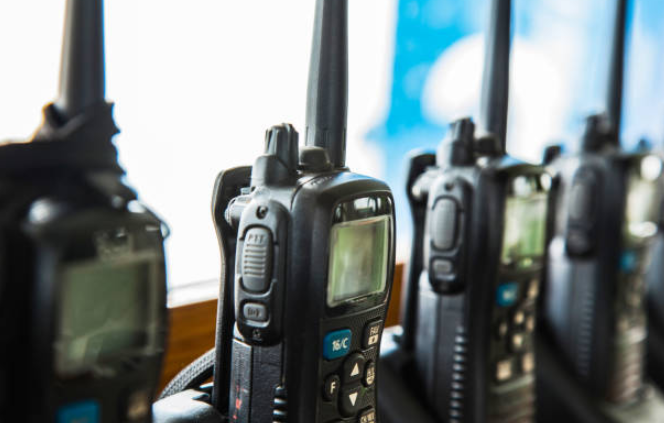Imagine a world where communication was limited to handwritten letters and slow postal services. A time when the only way to connect with someone far away was through lengthy waits and uncertain deliveries. Now, fast forward to today’s digital age, where instant connectivity is taken for granted. At the heart of this transformation lies one remarkable invention: communication radios.
RadioRed are the first online store specialized in Radio Communication, you will find a wide range of portable, mobile, intrinsic radios, radio bases, repeaters, antennas and accessories from the main brands, Kenwood, ICOM, Motorola, Hytera, they are in Monterrey shipping to all of Mexico.
The Evolution of Communication Radios
The journey of communication radios began in the late 19th century. Early inventors like Guglielmo Marconi harnessed radio waves to transmit signals over long distances, paving the way for wireless communication.
As technology progressed, vacuum tubes emerged, allowing for amplified signals and clearer audio. This marked a significant leap forward in usability and range.
By the mid-20th century, transistors replaced bulky vacuum tubes. The result was smaller devices with improved portability and efficiency. Citizens’ band (CB) radios gained popularity among truckers and hobbyists during this era.
The introduction of digital technology transformed communication radios once again. Digital signal processing made transmissions more reliable while enhancing sound quality.
Today’s models feature advanced capabilities such as text messaging and GPS integration, demonstrating how far we’ve come since those early experiments with radio waves. Each stage has shaped our connectivity landscape in profound ways.
The Impact of Communication Radios on Society
Communication radios have reshaped how we interact. They bridge distances, creating a sense of closeness in our fast-paced world.
Think about public safety. Police, fire departments, and medical teams rely on radios for real-time communication. This instant connectivity can save lives during emergencies.
In daily life, businesses use communication radios to streamline operations. Warehouses and construction sites thrive on clear dialogue among team members. Efficiency improves as messages are transmitted swiftly without the delays of traditional methods.
Socially, radio has also played a role in entertainment and information dissemination. From music to news broadcasts, it connects listeners with diverse content across regions.
Moreover, community engagement thrives through local radio stations that share vital information while fostering unity among residents. The impact is far-reaching—transforming not just industries but also forming bonds within communities themselves.
Advancements in Technology and Communication Radios
The landscape of communication radios has dramatically shifted thanks to technological innovations. Digital signal processing has enhanced audio clarity, making conversations more intelligible even in noisy environments.
Modern communication radios now feature compact designs without compromising power or range. This miniaturization enables users to carry robust devices that fit comfortably in pockets or on belts.
Moreover, the integration of GPS technology allows for precise location tracking during operations. This capability is crucial for industries like logistics and emergency services, where knowing one’s whereabouts can save lives and enhance efficiency.
Smart features are another exciting development. Many radios now connect seamlessly to smartphones via Bluetooth, enabling hands-free operation while keeping users connected on multiple platforms.
As these advancements continue, the future looks promising for communication radios—bridging gaps and enhancing connectivity across various fields.
Collectively, these issues highlight an ongoing dialogue within the industry about balancing innovation with responsibility.
The Role of Communication Radios in Emergencies and Disasters
Communication radios have proven indispensable during emergencies and disasters. When traditional communication networks fail, these devices often remain operational. They provide critical links between responders and those in need.
In chaotic situations, clear communication can save lives. Radios allow first responders to coordinate their actions efficiently. They relay vital information about hazards, resources, and evacuation routes.
Moreover, community radio systems ensure that local populations receive timely updates during crises. This empowers individuals with knowledge on safety measures or shelter locations.
The ability to communicate without reliance on commercial power sources further enhances the reliability of radios in disaster scenarios. Battery-operated or solar-powered options keep channels open when they are needed most.
As technology advances, so does the functionality of communication radios—incorporating features like GPS tracking and automatic alerts for even greater effectiveness during times of distress.
Challenges and Controversies
While communication radios have transformed connectivity, they are not without challenges. One major issue is interference. Signals can overlap, leading to garbled messages or missed communications.
Regulatory concerns also arise. Licensing regulations vary by region and can complicate usage for both amateur operators and professionals. This creates a web of compliance that many find daunting.
Privacy is another hot topic. As radios transmit information wirelessly, there’s always a risk of unauthorized interception. Sensitive conversations
Conclusion
The future of connectivity with communication radios is both exciting and promising. As technology continues to advance, the capabilities of these devices are expanding rapidly. We can anticipate improvements in clarity, range, and durability that will redefine how we connect with each other.
Emerging trends such as digital modulation techniques and integration with smartphones are paving the way for more versatile usage scenarios. The rise of software-defined radios allows users to customize their experience easily, adapting to various communication needs on the fly.
Moreover, as emergency preparedness becomes increasingly critical in our unpredictable world, the importance of reliable communication radios cannot be overstated. Enhanced features like GPS tracking and automatic alerts will play a vital role in ensuring safety during crises.
As we move forward into an era dominated by rapid change and innovation, communication radios will remain at the forefront of connectivity solutions. Their ability to bridge gaps—whether between individuals or communities—will continue to shape societal interactions for years to come. Embracing this evolution means recognizing not just what has been achieved but also imagining what’s possible next in our quest for seamless connection.

